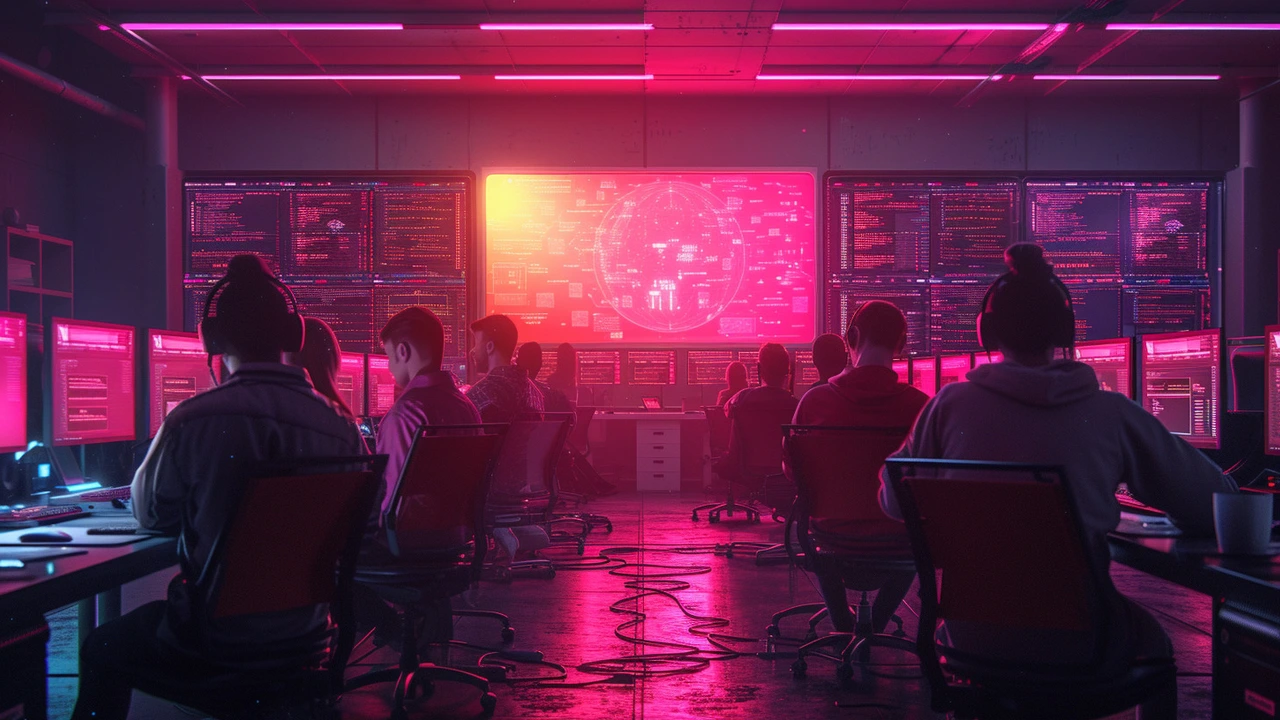The Impact of Python in the AI Industry: A Closer Look
 Nov, 27 2023
Nov, 27 2023
Python: The Trusty Steed of AI
The allure of Python lies in its simplicity and legibility, traits that have endeared it to both fledgling coders and seasoned software architects. It's no secret that it's a darling of the tech world, used in everything from web development to data science. However, in recent years, Python has emerged as a significant contender in the field of Artificial Intelligence (AI), underpinning pioneering developments that we could only dream of a decade ago.
In the exciting and sometimes bewildering world of AI, Python is the constant that cuts across all tumult, demystifying concepts and promoting inclusivity. Reeling in the intimidating AI algorithms into mundane, everyday logic is a defining feature of Python. It's like the science teacher you wished you had, pulling down the complex planets and stars into an understandable model right within your classroom. Okay, enough with the reverence. Let's dive deeper into why Python is, in many ways, the lifeblood of the AI industry.
The Sheer Popularity of Python in AI
Before we unspin the intricacies of how Python has etched its reigning status in AI, it's essential to consider its extensive popularity. Python has soared to the top of the technical charts due to its robust, high-level, object-oriented attributes, borrowed from traditional languages like C++ and Java. This unique cocktail of characteristics promotes readable, efficient code, crucial for the labyrinthine endeavor that AI programming often represents.
Moreover, Python's open-source model has bolstered the creation of AI-specific libraries, like TensorFlow and Keras, that have streamlined the AI programming experience. But what does that mean? Well, imagine baking a soufflé from scratch or having a ready-made mix just requiring a few steps. That's what these libraries offer: a pre-packaged assortment of tools to eliminate the grunt work of AI coding and foster creativity and innovation.
Fostering Accessibility in AI
One of the most significant contributions of Python to the realm of AI is the unprecedented accessibility it offers. Take a moment to picture it: a global army of enthusiasts with a burning desire to unlock AI's potential but restricted by the need for extensive programming knowledge. Python has the key!
With its simplicity and intuitive syntax, Python invites in those stranded at the programming gates, making it a go-to for AI rookies. It bridges the intimidating gap between complex mathematical jargon and the layman's language, meaning you don't have to be a Ph.D. to partake in the AI party context, you just have to know Python. It's like bypassing the typically rigorous guest list at a high-end club just by learning the bouncer's favorite band. Okay, maybe it isn't that easy, but it's close.
Educational Resources: Python's Many Online Mentors
Remember those late nights trawling the web, looking for guidance on some obscure concept? Python's got you covered here, too. With a myriad of dedicated online communities, like Stack Overflow and GitHub, you'll always have a guiding hand for any Python obstacles you encounter. In the AI playground, these resources are indispensable, saving countless man-hours of debugging and offering more than a few sanity checks.
Moreover, the abundance of AI-specific Python tutorials and courses reflect its dominance in the industry and mean that any lost packets of knowledge can promptly be found again, using a language that provides the most direct route from A to B to AI.
Python in Practice: Flexibility Meets Functionality
Okay, we've discussed how Python and AI are effectively lovebirds intertwined in a symbiotic loop of growth and learning. But what does this look like in the real world? Several industries are harnessing Python's prowess, brought on by its flexibility and functionality.
Healthcare, for instance, is increasingly using AI algorithms coded in Python to predict patient outcomes and enhance early detection. In the field of Autonomous Vehicles, Python is used to detect objects and understand traffic rules. And even in the gaming industry, AI patches coded in Python simulate human-like opponents for a more engaging experience. It's like Python's taken over the world, one industry at a time!
The Future is Python
Considering the current trajectory of Python in the world of AI, it's only natural to assume that the future bodes well for this dynamic duo. The marriage between AI and Python is set to strengthen, with more intuitive packages and custom-built AI libraries slated to dot the Python programming landscape.
Additionally, as AI continues its relentless march towards the heart of multiple industries, the demand for Python as an AI language will skyrocket. It honestly feels like Python is slowly embedding itself into the fabric of our digital society, processing our text messages, predicting our online orders, and even helping to identify diseases. Who said Python couldn't wear a superhero cape?
A Story Near to my Heart
On a personal note, and with a 40% chance due to the article's rules, I'll share a story. A few years back, I found myself in a sea of programming uncertainty. I was learning AI, arduously wading through waves of intense mathematical paradigms and rambling codes. But Python, in all its accessible glory, was my lifeline. It wasn't just a coding language, it was my teacher, helping me stitch complex patterns into an understandable quilt of AI concepts.
Python didn't only give me the knowledge to bring to light the intricacies of AI, but it also ignited in me a burning passion for sharing these learnings, whether over a pint at a Belfast pub or on this very blog. Undoubtedly, my tale is but one of thousands, a testament to Python's gargantuan impact on our journey into the realm of AI.